Sprayed insulation: what is it and where is it used?
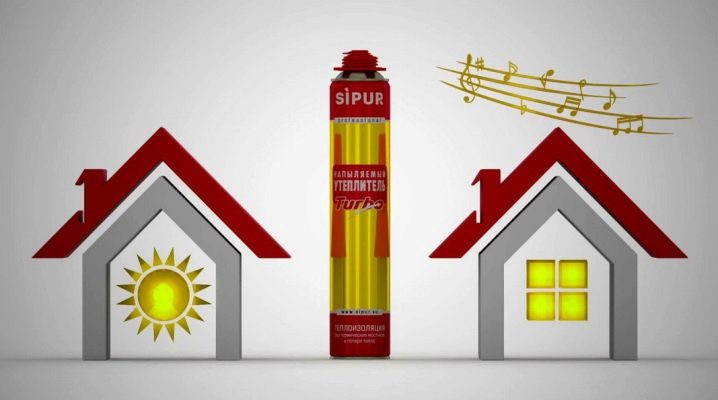
The process of insulating buildings is constantly being improved and at the same time is often accompanied by the use of the most effective and new technologies and more promising building materials than those that everyone is used to using. And now another type of high-quality insulation has appeared on the market, which is sprayed onto the surface of a certain area. These materials have already taken leading positions among the best thermal insulators.
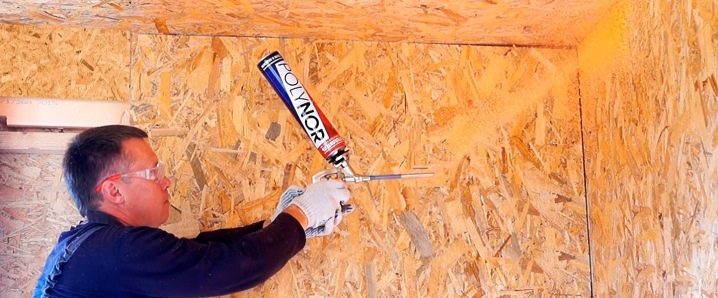
Features and composition
Sprayed insulation is called heat-insulating raw material (in fact, an analogue of polyurethane foam in cans), which is applied to the surface by spraying using special equipment.
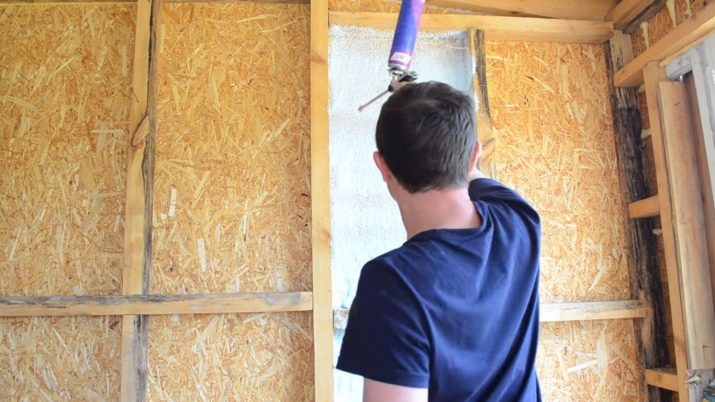


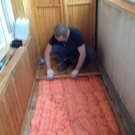
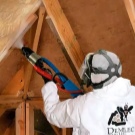
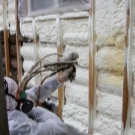
This substance consists of two liquid products, which, when mixed, can form a huge amount of foam, which is intended to cover a significant area for its insulation.
The main component of the sprayed insulation is polyurethane foam. This material is a special mixture of two components, which are polyol and isocyanate polymers.
- Component A is a hydroxyl-containing substance, it is necessary to maintain the reaction with component B. It is a solution of a saturated yellowish or dark brown color, in which you can find various polyesters with catalysts, foam regulators, fire retardants and blowing agents.
- Component B - isocyanate - a dark brown substance in a liquid state with a specific chemical odor. If the component begins to actively interact with the atmosphere, a solid polyurethane begins to form in the process, which will be completely unusable. It is for this reason that its deliveries are carried out in hermetically sealed containers, which reliably protect the components from contact with liquid or air (in cans).

When mixed, components A and B enter into active interaction, while a huge amount of carbon dioxide is released, which helps the material to foam well. After its solidification, polyurethane forms a layer of insulation, which consists of a large number of small, hermetically sealed cells, which are completely filled with carbon dioxide.
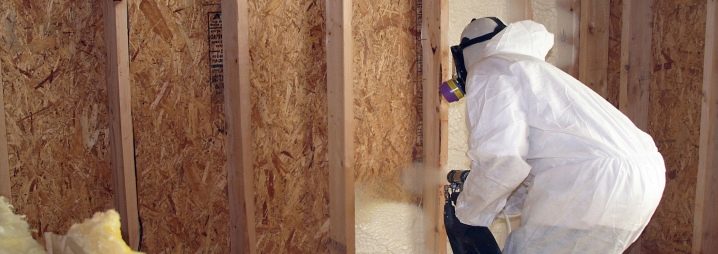
Due to this, the material has a reduced coefficient of thermal conductivity, therefore it is ideal for insulation.
Specifications
The sprayed heat-insulating material has a fairly light weight and can be applied with a layer of any thickness to a surface of any material without any significant problems. Sprayable insulation is well known to all professionals and novice craftsmen who appreciate this practical material for its unique characteristics:
- The highest thermal conductivity was recorded for these materials, and it is approximately 0.020-0.028 W / mS. In more modern materials, this figure will be much lower, which makes their purchase less desirable for the consumer.
- Excellent sound insulation performance. This category of insulators will successfully reduce even the strongest impact sounds that interfere with sleep and rest in the most comfortable conditions. Thus, complete silence will be ensured in any room when working with special instruments that are distinguished by increased noise output.
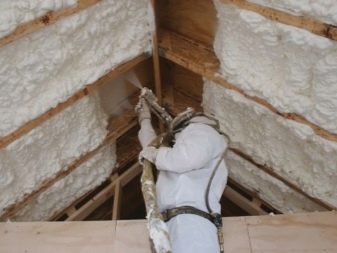
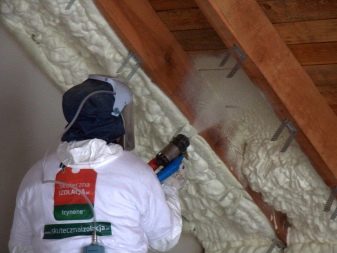
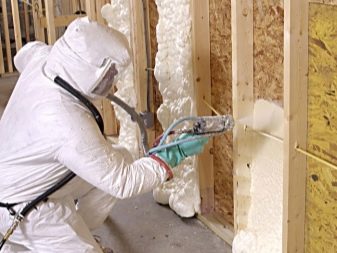

- The vapor permeability of sprayed insulators will allow them to simply absorb moisture, while not allowing a large amount of condensation to form, which can ruin the coating.
- The use of this innovative material makes it possible to insulate even those places that were previously considered inaccessible - and all this thanks to its unique consistency.
- The adhesion parameters that are characteristic of this thermal insulation material will allow you to quickly insulate surfaces made of any materials.
- The timing of construction work with this insulation can also be set as a record - 9-10 hours are enough for insulation of 100-120 m2 with the lowest labor cost of this process.
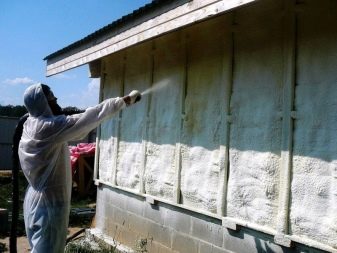
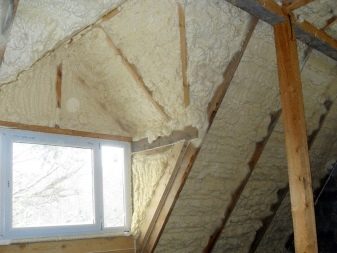
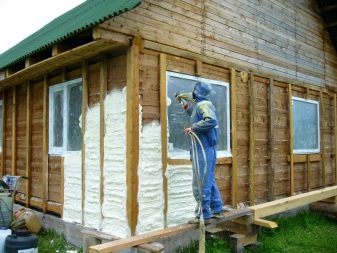

- In the characteristics of the spray-type insulation, excellent resistance to various kinds of biological organisms and chemical reagents is also noted.
- The resulting coating will last for a very long time and will not suffer from the constant impact of various precipitation typical for the zone of its use, the aggressive atmosphere of all kinds of industrial production, various pests and microorganisms (at the same time, the material is afraid of prolonged exposure to sunlight, which must be taken into account when working with it).
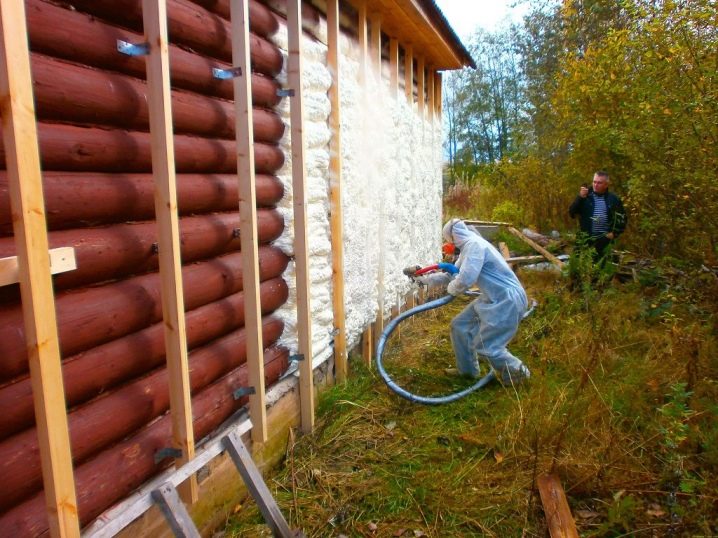
- Polyurethane foam with a density of 70 kg / cu. m. The material practically does not allow water to pass through and quite often it is used as waterproofing.
- Experts do not classify this material as non-combustible (NG), however, due to the fire retardant included in component A, it was awarded a special certificate of fire-prevention type G2. The material itself does not burn well, and its composition will only contribute to the rapid self-extinguishing of an open flame due to the timely release of carbon dioxide from the cells.
- The approximate consumption of insulation is 890 ml per 1 m2 with a thickness of the applied layer of 5 mm.

Advantages and disadvantages
This material can become an excellent barrier to unproductive heat loss in the winter and will help save on air conditioning in the summer months. Due to its good heat-retaining qualities, only a very small layer of foam needs to be sprayed, therefore, PU foam is ideal for arranging internal thermal insulation. Besides, the sprayed material has many more positive qualities:
- Sprayed insulation, as the name implies, is applied by spraying a ready-to-use mixture from special equipment in the form of a gun, which is connected to the compressor. For this reason, after polymerization, the material forms completely seamless layer, which eliminates the appearance of cold bridges at the joints and where the foam will adhere to the functional elements of the structure.

- Due to the fact that when solidifying, the foam from polymers does not absorb water at all, it can easily withstand many successive cycles of both freezing and thawing without destroying its own internal structure. In addition, insulation well tolerate the effects of many external factorsthat other materials are afraid of. An exception can be made only by UV radiation. Subject to all existing installation rules, the insulation layer retains its technical characteristics for at least 50 years.
- Spray applied heat insulator adheres well to all known building materials, for example, to fairly smooth drywall and even metal. However, they must first be prepared with high quality, completely cleaned of dust, remove debris from them and remove various greasy stains.
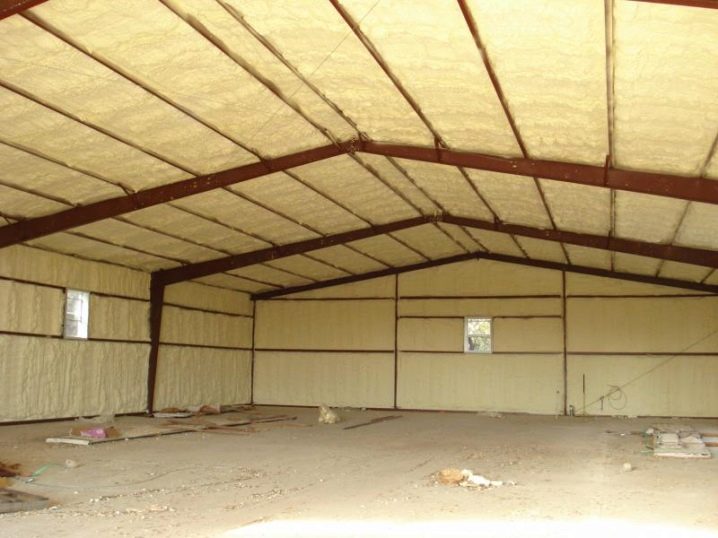
- For installation of insulation no need to use brackets, adhesives or battens, which will significantly save your construction budget. If the lathing is installed, then only to fix the external decor material, which can be lining, siding or drywall. Therefore, even the most inexperienced master will be able to cope with this kind of installation without difficulty.
- After polymerization, the foam becomes so strong that even able to withstand very significant external mechanical stress. It can be used for thermal insulation of the foundations of buildings and their basements, which are partially buried in the ground. In the process of backfilling and active operation, the sprayed insulation is not damaged, which is also an excellent characteristic.
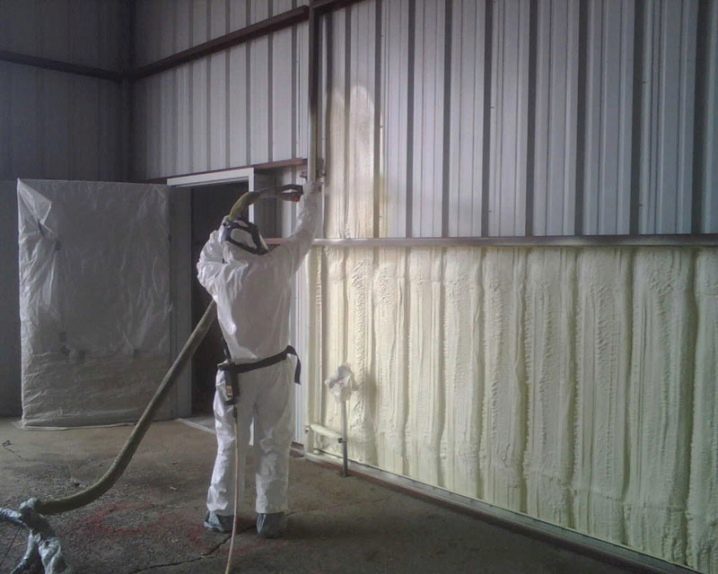
But there were also some drawbacks:
- The final cost of one square meter of insulation will turn out to be much higher than when using already well-known and familiar insulation materials - foam or mineral wool. However, the rather high technical characteristics of the new material will be able to justify the substantial sums invested in house insulation.
- The need to use special equipment. To spray a significant layer or amount of foam, a compressor and a special type of device are used where two elements are mixed. All these devices will need to be purchased or, if you only need to insulate your home, you will need to rent the equipment. And this will also bring not the smallest costs.
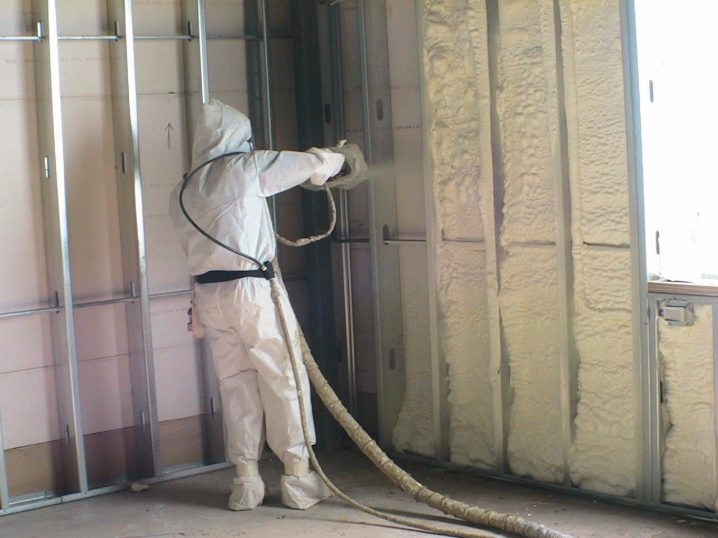
- The need to use various means of protection. After hardening, the material itself is considered completely safe for humans, but during the foaming process it will emit harmful chemical elements, so you need to work using a respirator. And in order to protect the skin from the sticking of foam (which will be very difficult to clean later), it is necessary to purchase overalls or other special clothing.
- Low UV resistance. The structure of the material will rapidly disintegrate when the foam is irradiated with UV rays. Therefore, the insulating layer should always be protected from the outside with decorative materials - cement plaster, durable siding, panels.

Application
Due to compliance with safety standards, sprayed insulation can be used for the arrangement of both public and residential buildings. The scope of its use is quite versatile, which is not surprising:
- roofing and attic structures of various types and shapes;
- insulation of floors in residential premises and various institutions and institutions;
- insulation of walls of various premises.
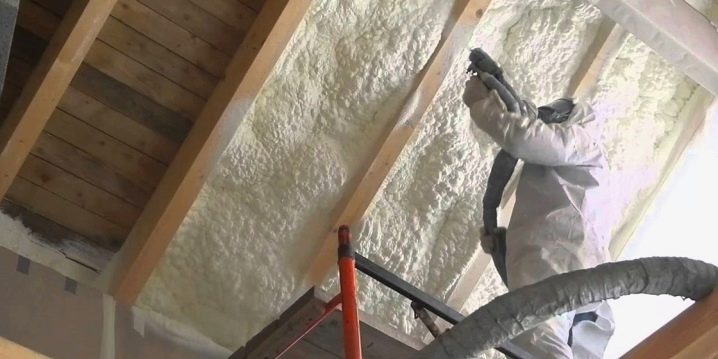
Depending on the purpose of the objects of use, the following classification can be proposed:
- industrial building;
- all kinds of outbuildings;
- refrigeration equipment;
- pipelines;
- various process tanks.
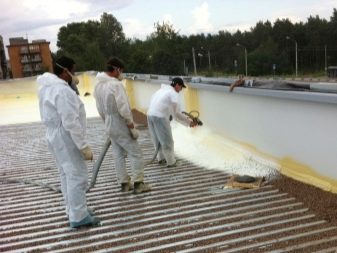
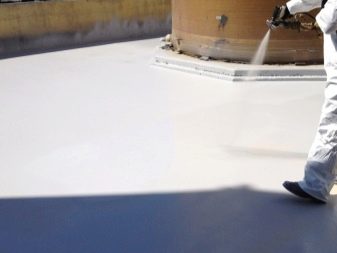

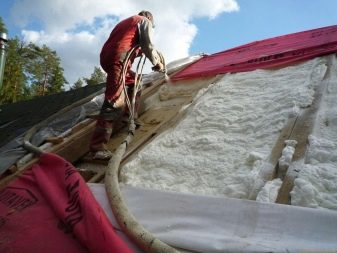
Many owners of their own cottages, and even apartments, want to do all the construction work around the house with their own hands, if possible. But in this case, it can be difficult to do this without some training and important equipment.
In any case, for do-it-yourself polyurethane foam insulation you will need the use of special equipment and components necessary for this operation, namely:
- polyol, which must be mixed in a container with freon;
- isocyanate mixed with freon 134.
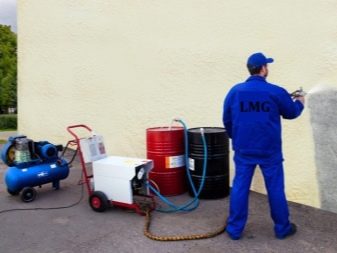
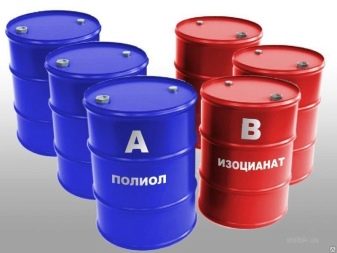
These cylinders must be filled so that the pressure in them is at least 8 atm. After the surface is processed and prepared, the spraying itself takes place - you need to carefully activate the spray gun, directing the foamy stream of insulation to the place you need. Since the independent application process is not as complicated as the preparatory measures, it will be more convenient to choose a heater in cylinders. In addition, they cost almost the same. Sprayed insulation in cylinders is considered much more convenient, since it has competently executed industrial training, including the necessary pressure regime.
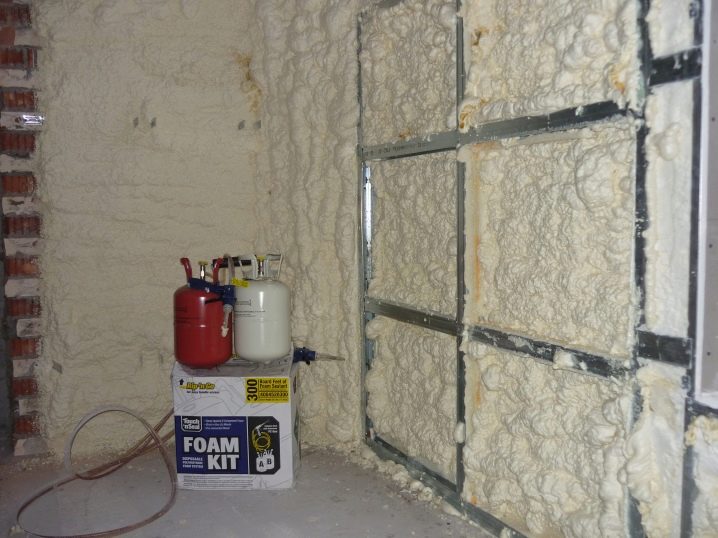
Application technology
Polyurethane foam is often chosen for processing the rafter system from the inside, so it can be used not only at the stage of building a dwelling, but also after all work is completed from the attic side.After hardening, the foam not only insulates the space under the roof, but also creates a high-quality noise-absorbing barrier, and also strengthens the entire roof structure. A spray applied thermal insulator is convenient to use for thermal insulation of attic walls, which usually have a complex shape with a huge number of uneven joints and places that are difficult to access. Usually, the insulation of a room can take up to several hours, after which you can enjoy plenty of comfortable warmth in winter and pleasant coolness in summer.
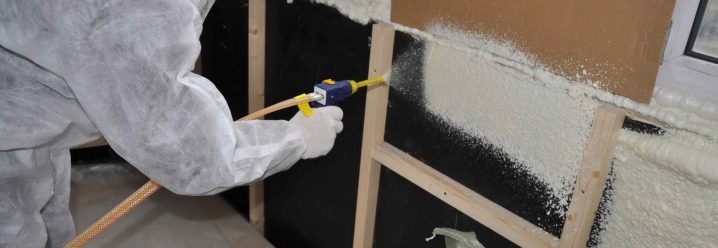
If you choose insulation for walls, then you need to know that you can apply it to external walls as well as to internal surfaces. In addition to the insulation itself, the treatment helps to protect the structural elements of the building from the effects of rain, wind loads, temperature fluctuations and other destructive factors.
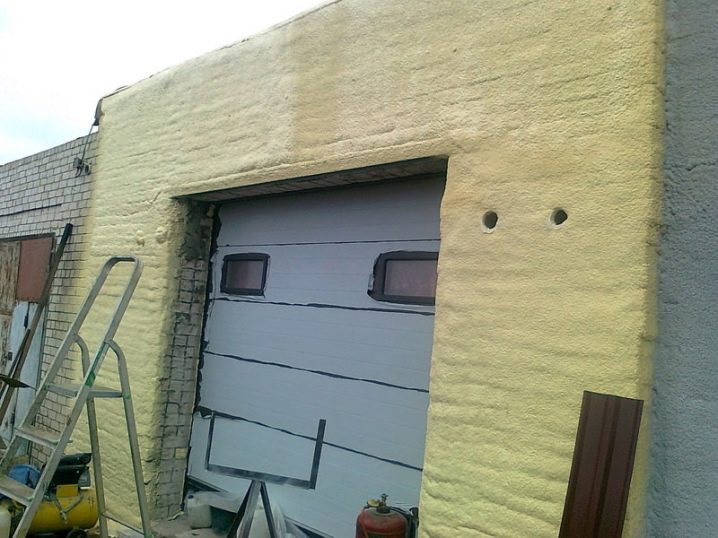
The material can be perfectly applied to horizontal surfaces, and only a small layer is needed for good insulation, so the distance from the floor to the ceiling will not significantly decrease.
The technology for applying the material is not too complicated:
- surfaces need to be cleaned of dust and dirt, and also made a little damp;
- you need to install a special nozzle on the cylinder;
- the balloon must be gently shaken, then the nozzle must be gently directed to the area to be insulated in the same way;
- by pulling the trigger of the gun, the material is distributed by the sprayer.
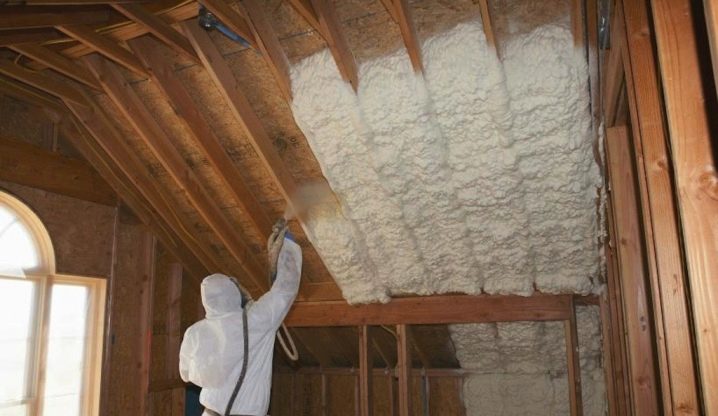
Manufacturers and reviews
Today, the following sprayed heaters can be called very popular:
- Polynor Is an insulation based on polyurethane foam, which was developed jointly by several well-known construction companies. Polynor has only the very best consumer reviews as the best of all modern materials, which is ideal for heat and sound insulation. In addition, the scope of its application is wide enough, it opens up considerable opportunities for high-quality insulation work.
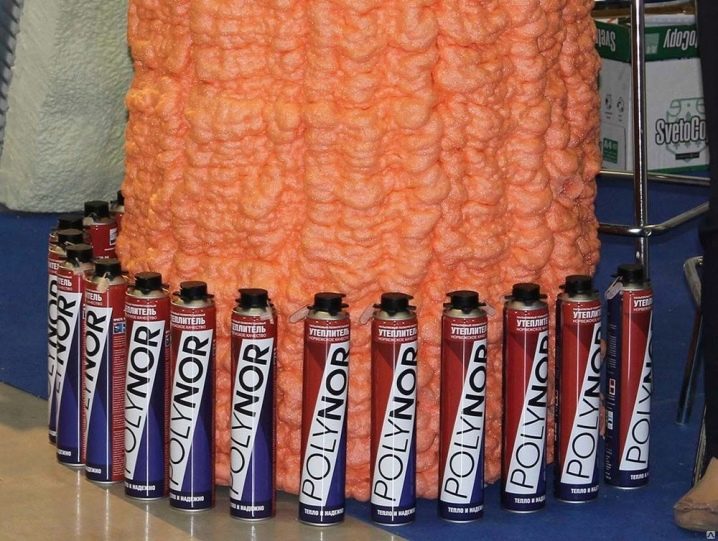
- Ecotermix - it is a sprayed insulation, which is made on the basis of vegetable oils, it contains a minimum amount of harmful substances. On sale there are two varieties of it: grades 300 - with a closed structure to protect the outer surfaces from the cold, and grades 600 - with an open structure for interior work. Thus, you have the opportunity to select a material for a certain type of work.
- Sealection 500 - American-made material. It has an open structure and fire safety class G2. It is also in high demand, although it has a decent cost.

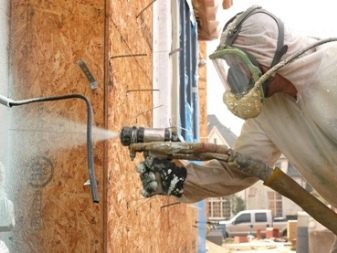
- Healtok Soy 200 - insulation with a closed structure, made from soybean oil and various wastes from the number of polymers. Perfectly adheres to any possible surface, fills all cracks and pores on walls and floors with high quality.
- Sprayed polyurethane insulation Teplis - this is an excellent solution in the pressing issues of warming open spaces, hard-to-reach places and communications, the roof, the foundation of the building. Teplis can be used successfully even by a person who does not have special skills. Spraying is carried out using an assembly gun. Insulation speed of 1 m2 in 2-3 minutes.
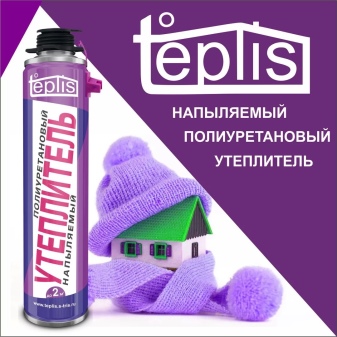

- Insulation Penoplex FastFix can be applied to any surface, including vertical, as well as surfaces with a negative slope. Ideal for small spaces. It can also be used as an auxiliary insulation for application to uneven and geometrically irregular surfaces, as well as places where it is technologically difficult to use sheet insulation.
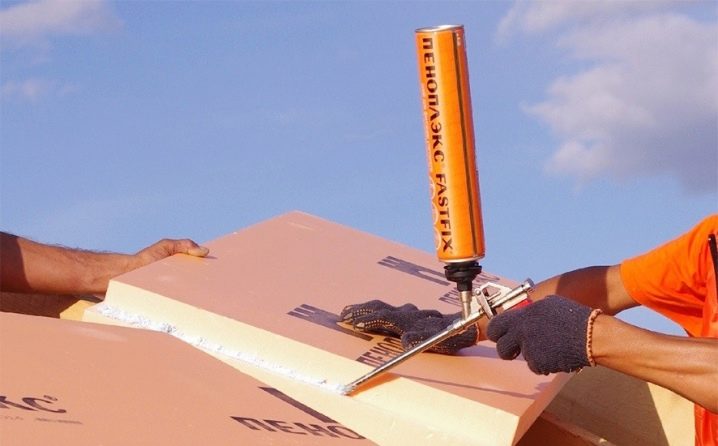
Of course, there are other companies that produce insulation, but insulation from these manufacturers is in the greatest demand.
You will learn even more interesting information about sprayed insulation in the next video.













The comment was sent successfully.